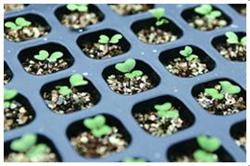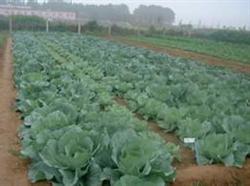Nutritional characteristics and fertilization techniques of spring cabbage

1. Seedling bed fertilization, seedling transplanting and strong seedling cultivation of spring cabbage are the basis of high yield. Fertilization in nursery bed is the key to cultivate strong seedlings. Nursery bed soil to choose fertile soil, last year did not grow cruciferous vegetables in the pastoral soil. The nursery bed should apply fully mature farm manure, combined with appropriate amount of nitrogen, phosphorus and potassium ternary compound fertilizer. Due to the small amount of potassium needed in the seedling stage of heading cabbage, no or less potash fertilizer can be applied. After fertilization, ploughing and raking flat, set aside sifted fine soil to cover the soil. The phenomenon of early bolting is easy to occur in spring cabbage nursery. in addition to strictly controlling the sowing date, we should also pay attention to fertilization at seedling stage, less fertilization at seedling stage, poor nutritional conditions, easy to promote bolting, too much fertilization, seedling growth too fast, easy to feel low temperature prematurely, and need to control fertilization. In general, less available nitrogen fertilizer should be applied before winter, and a small amount of available nitrogen fertilizer should be applied during seedling division to facilitate root growth and promote slow seedling growth. Applying nitrogen fertilizer once before planting seedlings is very beneficial to improve the resistance of seedlings and shorten the slow seedling stage. two。 Field fertilization (1) Base fertilizer should be based on organic fertilizer, 30-50 kg / mu of high-nitrogen and high-potassium compound fertilizer, 10-15 kg of urea, 10-15 kg of diammonium phosphate, 10-15 kg of potassium sulfate or potassium chloride. Boron fertilizer and magnesium fertilizer should be combined with boron fertilizer and magnesium fertilizer for the plots lacking boron and magnesium. Generally, 1-1.5 kg boron fertilizer and 10-15 kg magnesium sulfate are applied at the bottom of each mu. (2) topdressing varies with different cultivation seasons of spring cabbage and autumn cabbage. The growth period of spring cabbage is relatively short and the period is in advance. When the spring cabbage entered the rosette stage, the root absorption capacity was gradually strengthened, combined with ploughing and loose soil for the first time, about 10 kg urea or high nitrogen compound fertilizer was applied per mu. In the heading stage, early-maturing varieties and late-maturing varieties were topdressing 1-2 times and 2-3 times respectively. In this period, cabbage has a high demand for nitrogen, phosphorus and potassium. Generally, in the early stage of heading, according to the growth trend of cabbage, the amount of fertilizer topdressing should be increased for the plots with insufficient base fertilizer and weak growth, and 40-50 kg compound fertilizer should be applied per mu. Fertilizing should be put into the soil and watered in time to promote pilling.
- Prev

Tips on the cultivation of spring cabbage
Cabbage has the characteristics of low investment, labor-saving, labor-saving and high yield, so it is widely cultivated in the plain areas of our province. Baoding City perennial cultivation of early spring cold shed cabbage and open field cabbage area of more than 30,000 mu. Now, it's time to raise cabbage seedlings in early spring. In order to help you do a good job in raising seedlings and lay a foundation for this spring's bumper harvest.
- Next

Technical management measures for cultivating strong seedlings of spring cabbage
At present, it is the seedling period of spring cabbage, so we should pay attention to the following technical points in production. The improved varieties were selected, such as selected 8398, Chungan 2, Chungan 3 and other varieties with cold resistance, disease resistance and strong winter. Prepare the seedbed and choose a field with fertile soil and no cruciferous vegetables last year to make a seedbed.
Related
- Where is it suitable to grow horseradish in China? it is expected to see the middle altitude horseradish in Alishan.
- How to prevent tomato virus disease reasonably? (Control methods included)
- Many people like to plant towel gourd on the balcony. What are the main points of this method and management?
- What crops can chili peppers be mixed with?
- Fertilization techniques and matters needing attention in Tomato
- What are the grafting techniques for peach seedlings in spring?
- Harm and control methods of root swelling disease of Chinese cabbage
- What are the pests of sweet potatoes? How to prevent and cure it?
- Symptoms, causes and Control methods of navel Rot in Tomato
- The cause of "Cucumber rotten bibcock" in Farmers' planting Cucumber and its Control Plan

